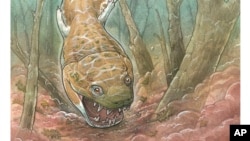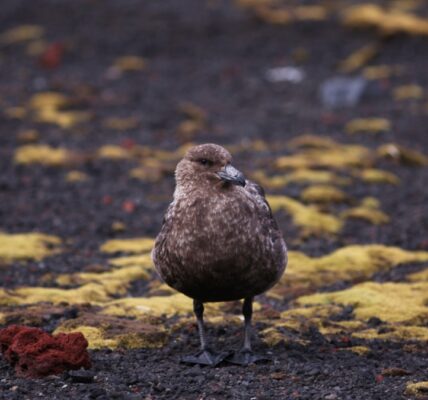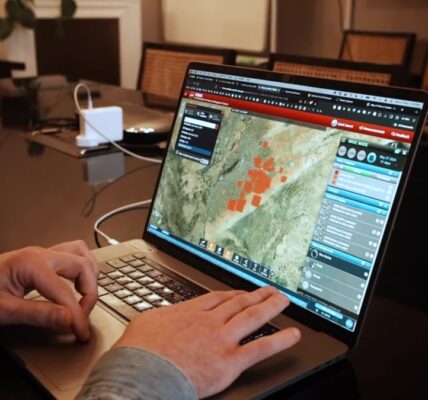Fossils show huge salamanderlike predator with sharp fangs existed before the dinosaurs
Scientists have revealed fossils of a giant salamanderlike beast with sharp fangs that ruled waters before the first dinosaurs arrived.
The predator, which was larger than a person, likely used its wide, flat head and front teeth to suck in and chomp unsuspecting prey, researchers said. Its skull was about 60 centimeters (2 feet) long.
“It’s acting like an aggressive stapler,” said Michael Coates, a biologist at the University of Chicago who was not involved with the work.
Fossil remnants of four creatures collected about a decade ago were analyzed, including a partial skull and backbone. The findings on Gaiasia jennyae were published Wednesday in the journal Nature. The creature existed some 40 million years before dinosaurs evolved.
Researchers have long examined such ancient predators to uncover the origins of tetrapods: four-legged animals that clambered onto land with fingers instead of fins and evolved to amphibians, birds and mammals including humans.
Most early tetrapod fossils hail from hot, prehistoric coal swamps along the equator in what’s now North America and Europe. But these latest remnants, dating back to about 280 million years ago, were found in modern-day Namibia, an area in Africa that was once encrusted with glaciers and ice.
That means tetrapods may have thrived in colder climates earlier than scientists expected, prompting more questions about how and when they took over the Earth.
“The early story of the first tetrapods is much more complex than we thought,” said co-author Claudia Marsicano at the University of Buenos Aires, who was part of the research.
The creature’s name comes from the Gai-As rock formation in Namibia where the fossils were found and for the late paleontologist Jennifer Clack, who studied how tetrapods evolved.
Source: voanews.com




